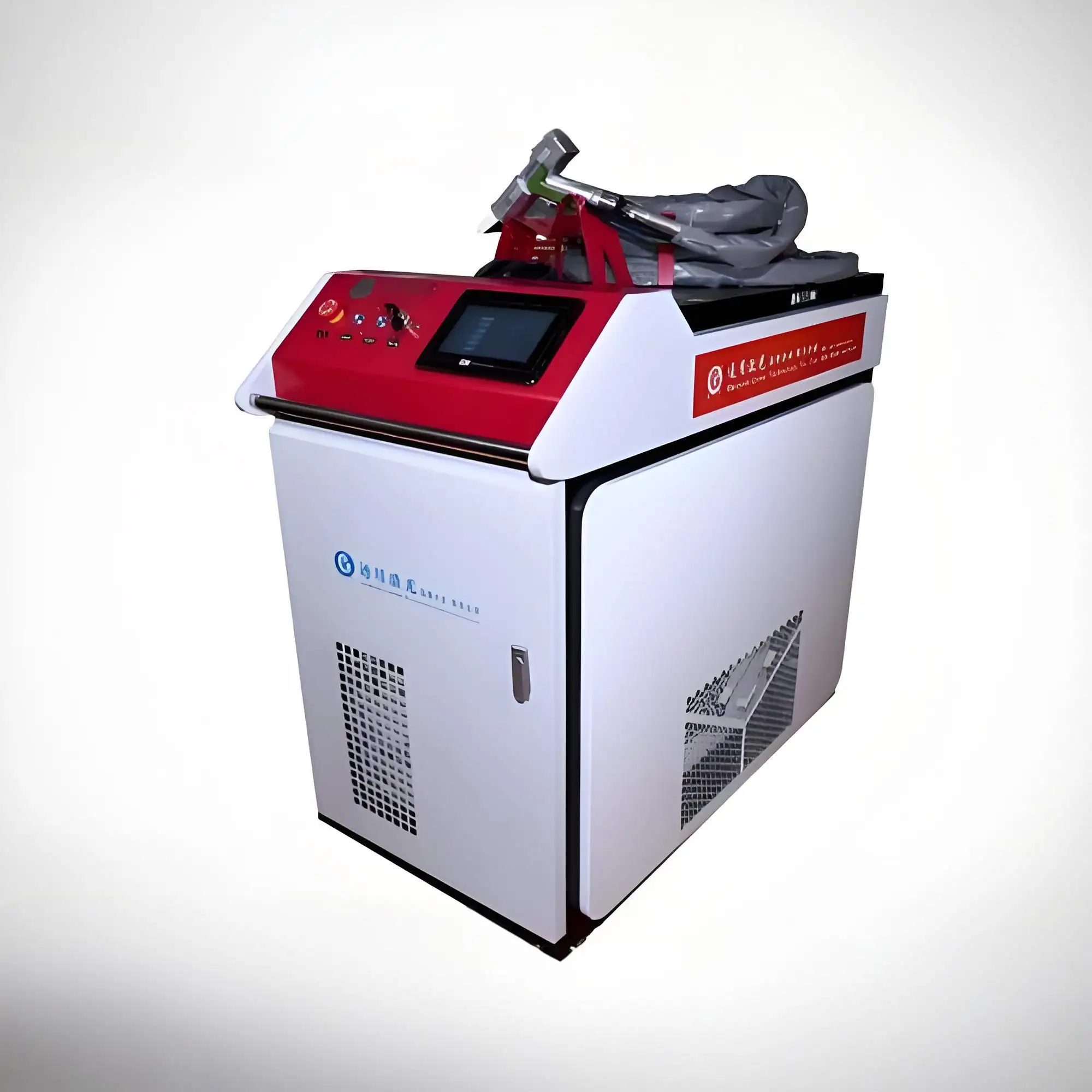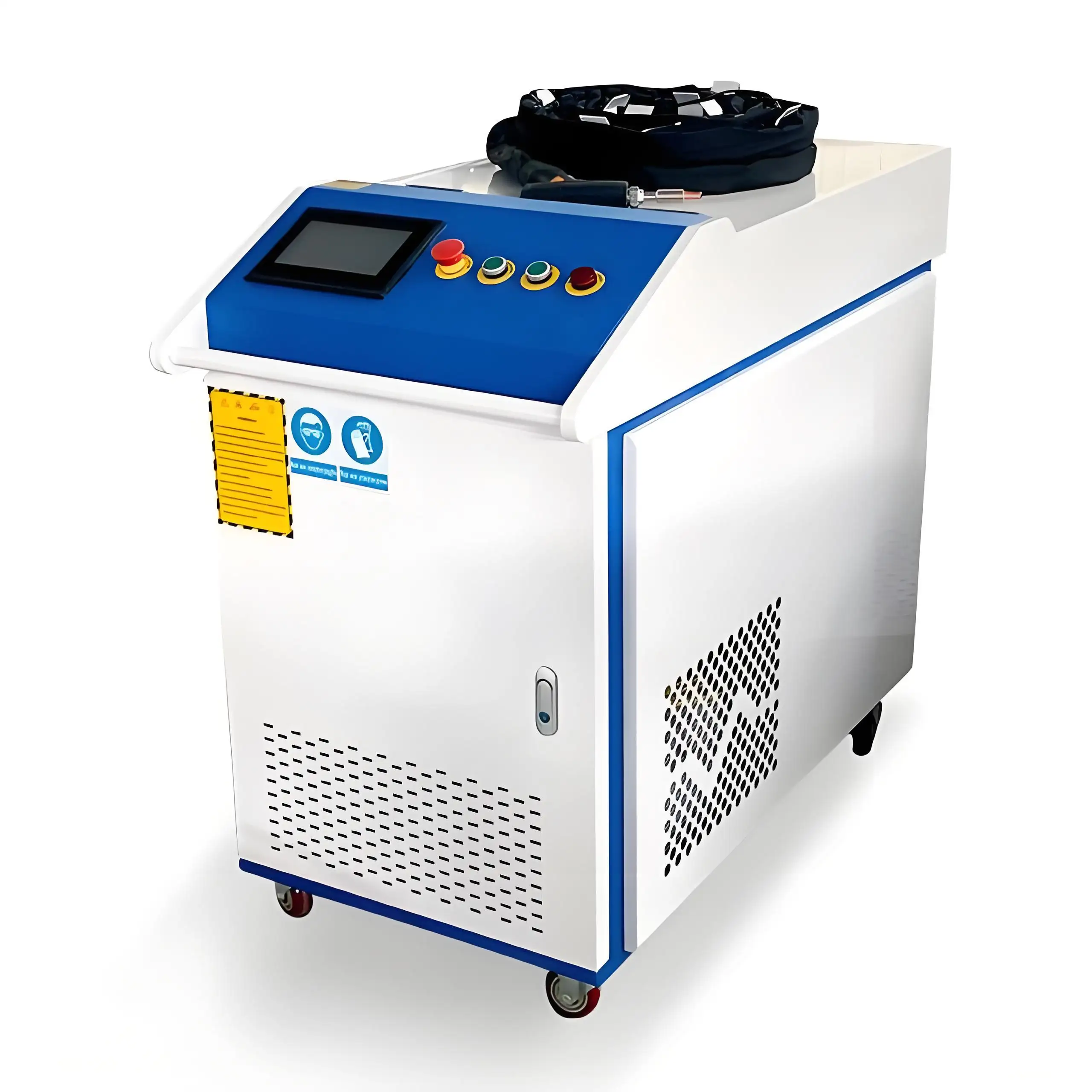As someone who’s spent over a decade in the industrial cleaning and surface treatment industry, I’ve seen laser rust removal machines transform how businesses tackle corrosion. These machines are game-changers—efficient, eco-friendly, and precise. But one question I hear often is: how large a workpiece can these machines handle? Whether you’re a factory manager, a restoration specialist, or a small business owner, understanding the capabilities of laser rust removal equipment is key to deciding if it’s the right fit for your needs. Let me walk you through the factors that determine the size of workpieces these machines can process, share some practical insights, and help you make an informed decision.
Understanding Laser Rust Removal Machines
Before diving into workpiece size, let’s get a quick grasp of what these machines do. Laser rust removal uses high-energy laser beams to vaporize rust, paint, or other contaminants from metal surfaces. Unlike abrasive methods like sandblasting, it’s non-contact, doesn’t damage the base material, and produces minimal waste. I’ve worked with clients in industries ranging from automotive to shipbuilding, and they all appreciate how lasers deliver clean, ready-to-coat surfaces without the mess.
The size of the workpiece a machine can handle depends on several factors: the machine type, laser power, scanning area, and whether the system is stationary or portable. Let’s break these down.

Key Factors Affecting Workpiece Size
1. Machine Type: Handheld vs. Stationary vs. Robotic
The type of laser rust removal machine you’re using plays a huge role in determining the size of the workpiece it can handle. Here’s what I’ve observed over the years:
Handheld Laser Systems: These are portable, lightweight devices, typically used for smaller or irregularly shaped workpieces. I’ve used handheld lasers on everything from vintage car parts to small steel beams. They’re great for flexibility, but their scanning area is limited—usually 100mm x 100mm to 200mm x 200mm per pass. For larger surfaces, you move the laser manually, so there’s no strict size limit, but it’s labor-intensive for big jobs. I once helped a client clean rust off a 2-meter-long steel pipe with a handheld unit—it worked, but it took time.
Stationary Laser Systems: These are fixed machines where the workpiece is placed on a table or conveyor. They’re common in manufacturing for batch processing. The table size dictates the workpiece limit, often ranging from 500mm x 500mm to 2000mm x 1000mm. I’ve seen stationary systems handle large steel plates for construction, but if the workpiece exceeds the table size, you’ll need to reposition it, which can slow things down.
Robotic Laser Systems: For massive workpieces, robotic systems are the go-to. These integrate lasers with robotic arms, allowing precise cleaning over large areas. I worked on a project cleaning rust from a 10-meter-long ship hull section using a robotic laser system. The size limit depends on the robot’s reach, often several meters, making them ideal for industries like aerospace or shipbuilding.

2. Laser Power and Efficiency
Laser power, measured in watts, affects how quickly a machine can clean a surface, which indirectly impacts the practical size of workpieces. Common power levels range from 50W to 2000W:
Low-Power Lasers (50W–200W): These are slower and best for small or delicate workpieces, like tools or engine parts. I’ve used a 100W laser to clean rust off a motorcycle frame (about 1.5m long), but it took multiple passes.
Medium-Power Lasers (200W–500W): These strike a balance between speed and precision, suitable for medium-sized parts like steel beams or machinery components. I’ve seen 300W lasers clean 1m x 1m steel plates efficiently.
High-Power Lasers (500W–2000W): These are workhorses for large-scale jobs. A 1000W laser I used on a bridge girder (4m long) cleaned rust in half the time of a 200W unit. Higher power means faster cleaning, making them practical for oversized workpieces.
3. Scanning Area and Beam Delivery
The scanning area—the area the laser beam can cover in one pass—varies by machine. Handheld units have smaller scanning heads (e.g., 100mm x 100mm), while stationary or robotic systems can cover up to 300mm x 300mm per pass. For larger workpieces, the machine either moves the beam or the workpiece itself. I’ve seen systems with galvanometer scanners handle complex shapes by adjusting the beam dynamically, which is great for curved or uneven surfaces.
Some advanced systems use fiber optic cables to deliver the laser beam, extending the reach to several meters. This is a lifesaver for cleaning large structures like storage tanks or pipelines without disassembling them.
4. Workpiece Geometry and Accessibility
Size isn’t just about length or width—it’s also about shape and accessibility. Flat surfaces like steel sheets are easier to clean than intricate parts like engine blocks. I once worked on a cylindrical pressure vessel (2m diameter) with a robotic laser. The curved surface required precise programming, but the system handled it flawlessly. For complex geometries, robotic or handheld systems shine because they can maneuver around corners and crevices.

Practical Size Limits: A Quick Reference
To make things clearer, here’s a table summarizing the typical workpiece sizes different laser rust removal systems can handle, based on my experience:
|
Machine Type |
Typical Workpiece Size |
Best For |
Limitations |
|---|---|---|---|
|
Handheld |
Up to 2m x 2m (manual movement) |
Small parts, on-site repairs |
Slow for large areas |
|
Stationary |
500mm x 500mm to 2m x 1m |
Batch processing, flat surfaces |
Limited by table size |
|
Robotic |
Several meters (e.g., 10m x 5m) |
Large structures, complex shapes |
High cost, setup complexity |
This table isn’t exhaustive, but it gives you a sense of what’s possible. For oversized workpieces, like ship hulls or bridge components, robotic systems or multiple handheld units working together are your best bet.
Real-World Applications and Case Studies
To give you a better idea of how these machines perform, let me share a couple of projects I’ve worked on:
Automotive Restoration: A client needed to remove rust from a 1960s car body (roughly 4.8m long). We used a 200W handheld laser because the car’s curves and tight spaces required flexibility. It took two days, but the result was a pristine surface ready for painting. A stationary system wouldn’t have worked due to the car’s shape.
Shipyard Maintenance: At a shipyard, we used a 1000W robotic laser to clean rust from a 12m-long hull section. The robotic arm’s 3m reach covered large areas quickly, and we finished in under a day. The client saved weeks compared to sandblasting.
Industrial Equipment: A factory needed to clean rust from a 1.5m x 1m steel plate used in a press machine. A 500W stationary laser with a 1m x 1m table did the job in hours, with no repositioning needed.
These examples show that while machine type and power matter, the workpiece’s size and shape are equally important. If you’re dealing with oversized or complex parts, talk to your supplier about custom solutions—many offer tailored systems.
Challenges and Considerations
While laser rust removal is powerful, it’s not without challenges. Here’s what I’ve learned:
Time vs. Size: Larger workpieces take longer, especially with low-power lasers. If you’re cleaning a 5m-long beam with a 100W handheld unit, be prepared for a marathon. Higher-power or robotic systems are more efficient for big jobs.
Cost: Robotic systems can handle massive workpieces but come with a hefty price tag—often $100,000 or more. Handheld units are more affordable (starting at $10,000), but they’re slower for large-scale work. Weigh your budget against your needs.
Operator Skill: Handheld systems require trained operators to ensure even cleaning. I’ve seen uneven results when beginners rush through large surfaces. Stationary and robotic systems are more automated but need proper setup.
Surface Condition: Heavy rust or thick coatings on large workpieces may require multiple passes, slowing the process. Pre-inspection helps set realistic expectations.

How to Choose the Right Machine for Your Workpiece
If you’re wondering which machine is right for your project, here’s my advice:
Assess Your Workpiece: Measure its dimensions and note its shape. Flat surfaces? Complex curves? This will guide your choice between handheld, stationary, or robotic systems.
Consider Volume: Are you cleaning one large workpiece or many smaller ones? Stationary systems excel for batch processing, while handheld units are better for occasional jobs.
Evaluate Power Needs: For large workpieces, opt for 500W or higher to save time. Smaller parts can get by with 100W–200W.
Check Portability: If you need to clean on-site (e.g., pipelines or bridges), handheld or mobile robotic systems are ideal.
Budget and ROI: High-power or robotic systems cost more upfront but save time and labor for large-scale projects. For smaller shops, a handheld unit might be enough.
I always recommend testing a machine before buying. Most suppliers offer demos, and seeing the laser in action on your workpiece can confirm if it’s up to the task.
Future Trends in Laser Rust Removal
The industry is evolving fast. I’ve noticed a few trends that could impact how large workpieces are handled:
Higher-Power Lasers: Manufacturers are developing 3000W+ lasers, which will clean massive surfaces even faster.
AI Integration: Some robotic systems now use AI to optimize cleaning paths, reducing time for complex or oversized workpieces.
Modular Systems: New designs allow combining multiple laser heads to cover larger areas simultaneously, ideal for industries like aerospace.
These advancements mean that even if your workpiece is too large for today’s machines, solutions are likely coming soon.
Final Thoughts
Laser rust removal machines are incredibly versatile, capable of handling workpieces from small tools to massive ship hulls. The key is choosing the right system—handheld for flexibility, stationary for batch work, or robotic for large-scale projects. By understanding your workpiece’s size, shape, and cleaning requirements, you can pick a machine that delivers results without breaking the bank. I’ve seen these systems save clients time, money, and headaches, and I’m confident they can do the same for you. If you’re unsure where to start, reach out to a supplier for a demo or consult with an expert to match the machine to your needs.

Related Questions and Answers
Q: Can laser rust removal machines handle non-metal surfaces?
A: Generally, they’re designed for metals like steel, aluminum, or iron. However, some lasers can clean rust or coatings from stone, wood, or composites, but you’ll need to check the machine’s specifications. I’ve used lasers on stone sculptures with success, but it required a low-power setting to avoid damage.
Q: How long does it take to clean a large workpiece?
A: It depends on the laser power, rust thickness, and workpiece size. A 1000W laser might clean a 1m x 1m steel plate in 10–20 minutes, while a 100W handheld unit could take hours for the same area. Always test on a sample to estimate time.
Q: Are laser rust removal machines safe for operators?
A: Yes, when used correctly. They emit high-energy beams, so operators need protective eyewear and training. Modern systems have safety features like interlocks and shields. I’ve never had an issue in years of use, but safety protocols are non-negotiable.
Q: What’s the maintenance cost for these machines?
A: Maintenance is minimal compared to sandblasting. Expect to replace lenses or filters periodically (costing $100–$500/year). High-power systems may need more frequent servicing, but overall, they’re low-maintenance. Check with your supplier for specifics.






